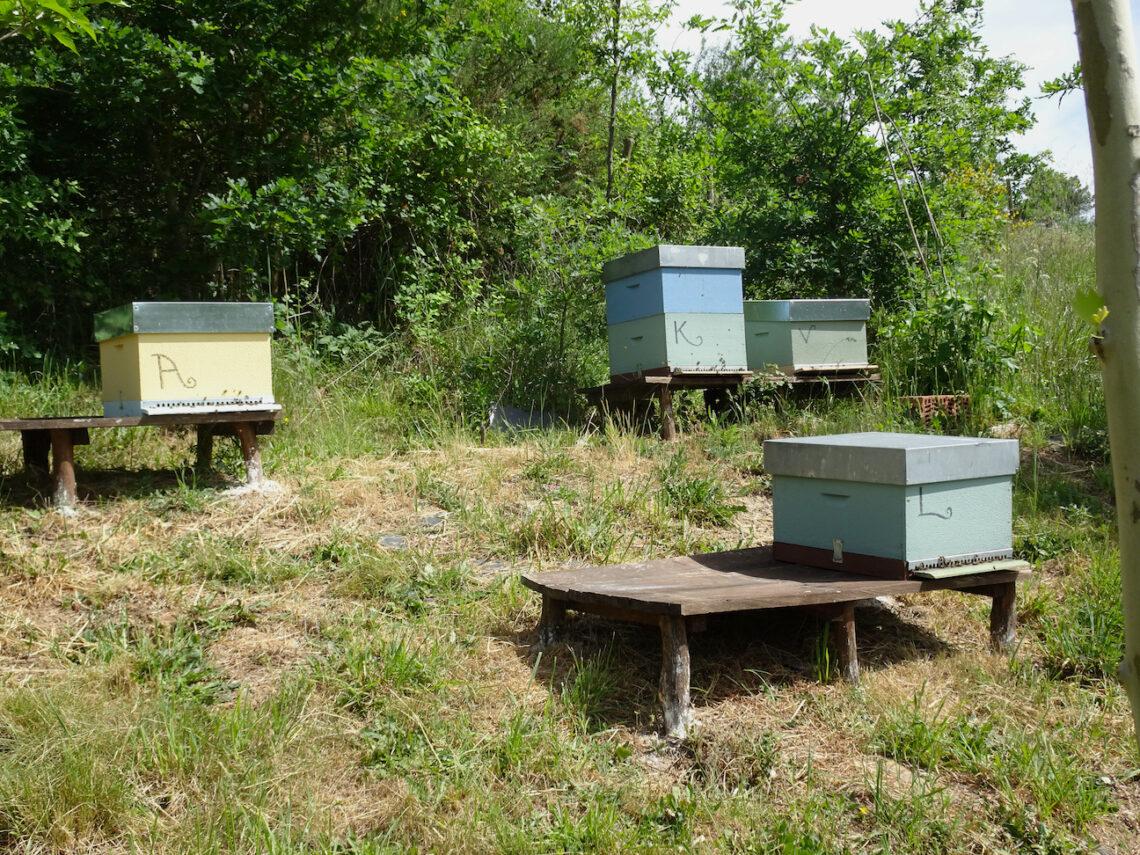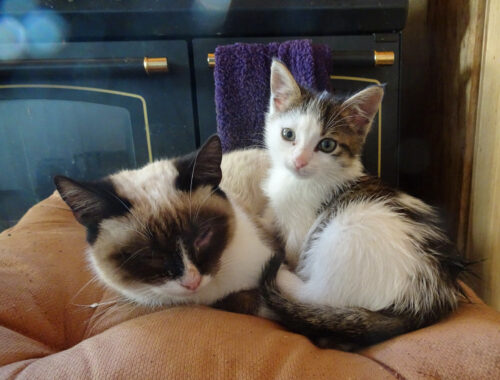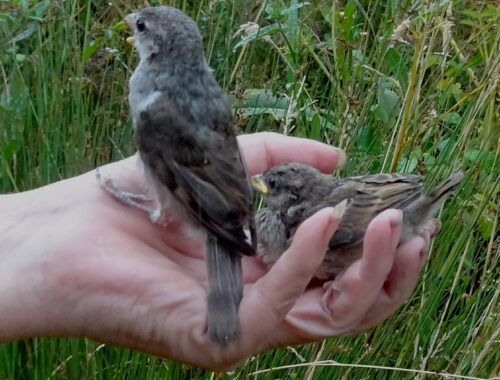
Starting with Treatment Free Bees
Naively, I thought that starting out with natural beekeeping and treatment-free bees would be quite straightforward. Three years in, with one surviving hive and having lost four already, it turns out that there are many more challenges than I had anticipated.
As novice beekeepers, we accept that we have a lot to learn about bees and beekeeping. However, it seems really obvious to me that if you continuously treat bees with chemicals, they never get the chance to develop any natural immunity to anything and this just adds to their stress and further impacts their long-term survival as a species. I mean really; they have to depend on humans and our toxic chemicals, or die out? That’s a very poor survival strategy.
So, we managed to find some one who would sell us two nucs – a mini-starter hive, with five frames a queen and some brood – which seemed great to us, although we had wanted to start with three hives, but apparently he only had two nucs to spare. The guy who sold them shad quite an operation, with over 100 hives, but he seemed very closed and reluctant to answer any questions. A friend told us later that some one had stolen all his honey just before he was ready to harvest and so he lost all his hives over winter as they had no stores to live on. Hmmm. Both those hives died of varroa over winter. We did not give them any varroa treatments ourselves, but are fairly sure they were already infested when we got them. We didn’t know that at the time, only after we got the next hives and saw how much bigger and stronger they were.
We got our next nucs from another beekeeper who was more of an enthusiast – or a beekeeping addict, as he called himself. He had over 60 hives and he was much more concerned about the bees than honey production and we bought three nucs from him. These bees were so much more lively and the nucs bigger than the first lot, but he still insisted that we must treat them for varroa. Which, of course, we did not. Two out of three of those hives didn’t make it through the winter, but the third is really strong. That’s good news as the new brood is already treatment-free.
By then we had figured out that the biggest problem the bees had to deal with was the varroa mite. And just another few steps on already steep learning curve for us.
The varroa mite is a parasitic mite that depends exclusively on honeybees for its existence and is said to have come from Asia, via either Africa or the former Soviet Union. Itndoes notseem to be a problem for the asian honeybee, but the European honeybee has not had the chance to develop immunity. Varroa has a complicated lifestyle, feeding on adult worker bees in one form before mating and inserting eggs in drone or worker cells, that feed off the bee larvae, weakening them before they hatch.
The assumption is that all honeybees will get a varroa infestation, the only question is how bad and how long it will take to kill them if left untreated. But if all colonies are treated, how can anyone know that all colonies will die if not treated?
All creatures can tolerate some parasitic infestation without being compromised, provided that they get enough of the right food and good quality water, proper shelter and are not poisoned or stressed beyond reason. Bees are no exception. All of the varroa treatments are toxic to some degree and I think they do more harm than good. Add pesticides, monoculture, chlorinated water and over-work into the mix and it’s a wonder that any bees survive – those that do are already doing amazingly well!
The organic varroa treatments, oxalic acid, formic acid or thymol (from thyme) all risk harming the queen, killing the brood, making the drones defective or even killing the bees. The treatments are intended to keep the mite population under control by reducing the numbers, rather than eliminating the mite completely, which is considered to be impossible. They need to be applied several times a year and each time they are used, the risk of harm to the bees is greater. Additionally, once the bees have brood, 80-85% of the mites will be in the cells and most of the treatments will not reach them.
Mite counts are needed to check the level of mite infestation. This involves collecting half a cup of bees, about 300, and making sure you do not have the queen, putting them in a jar with alcohol, which will separate the mites from the bees so you can count them. It will also kill the bees. Using powdered sugar instead of alcohol or ether will also cause the mites to drop off, but doesn’t kill the bees, just pisses them off. Mites prefer to lay eggs in drone cells, as the drones take longer to mature than worker bees (24 rather than 21 days) so the mites can feast for longer. It is recommended to uncap 100 drone cells, per hive pry out the drone pupae (killing them in the process) and count those that have mites. 1 in 50 is a low infestation, 1 in 20 is medium and 1 in 10 is high. If more than 15%of the drone cells are infested, the colony is said to be at risk of collapse.
There is no agreed threshold for ‘safe’ levels of mite infestation, as some colonies can struggle with an estimated 1000 mites, while others can thrive with 4-5000. This is due to the baseline health and living conditions of the bees. With regard to mite count levels, many sites refer to 3 mites in 300 bees – that’s 1% – is the level for which treatment is required.
We had anticipated that the biggest challenge for bees was coming out of winter, when they would be hungry with not much food around and we fed them then, but the two hives that did not make it didn’t touch the food. They survived the winter, but were not in good enough shape to gear up with spring. We don’t know what happened to them, as there were no dead bees around, they just disappeared. Bees are a bit of a mystery. Doing further research it seems that another challenging time is when the nectar flow stops at the end of summer and the bees start preparing for winter. Winter bees live longer than the summer bees, six months compared to six weeks. It’s their job to keep the queen warm so that she can start laying again at the end of winter, when they will incubate the new brood until they emerge as the winter bees die off. Unfortunately, varroa mites over-winter on the winter bees to transfer to the new brood, and the cycle continues.
I’m not impressed with the short-term results of any of the varroa treatments in the short term and the medium and long term risks are simply unacceptable – to deny the bees the opportunity to develop natural immunity because they are continuously medicated is unacceptable.
I am using various radiesthesia methods, to measure the ‘vibrational health’ of the bees and to transmit certain energies to them. Recently, two of our hens had scaly leg mites. I could treat one of them with a neem and plantain salve, that worked almost immediately. That wasn’t an option with the other one, as we couldn’t catch her. So I used radiesthesia and she also recovered, it just took about 10 days longer. This gives me confidence about working with the bees and their measurements are now very high, if this is an indication of strength and immunity and it continues, it is very promising.
This winter will be the big test.
Addendum: one of our hives survived the winter, but then we had an invasion of Asian hornets and they wiped out all our hives. It was awful, they were swarming all over the hives and there was nothing we could do. However, some of our bees must have swarmed already, because now – 2024 – the garden is full of honey bees and there are no beekeepers anywhere near here. I love the idea that our bees have rewilded themselves.

Merlin Returns

Garlic: friend or foe?
You May Also Like

Real-eyesing Reality, with Kittens
December 14, 2022
Muffin and the Iberian Dragon
July 12, 2024
